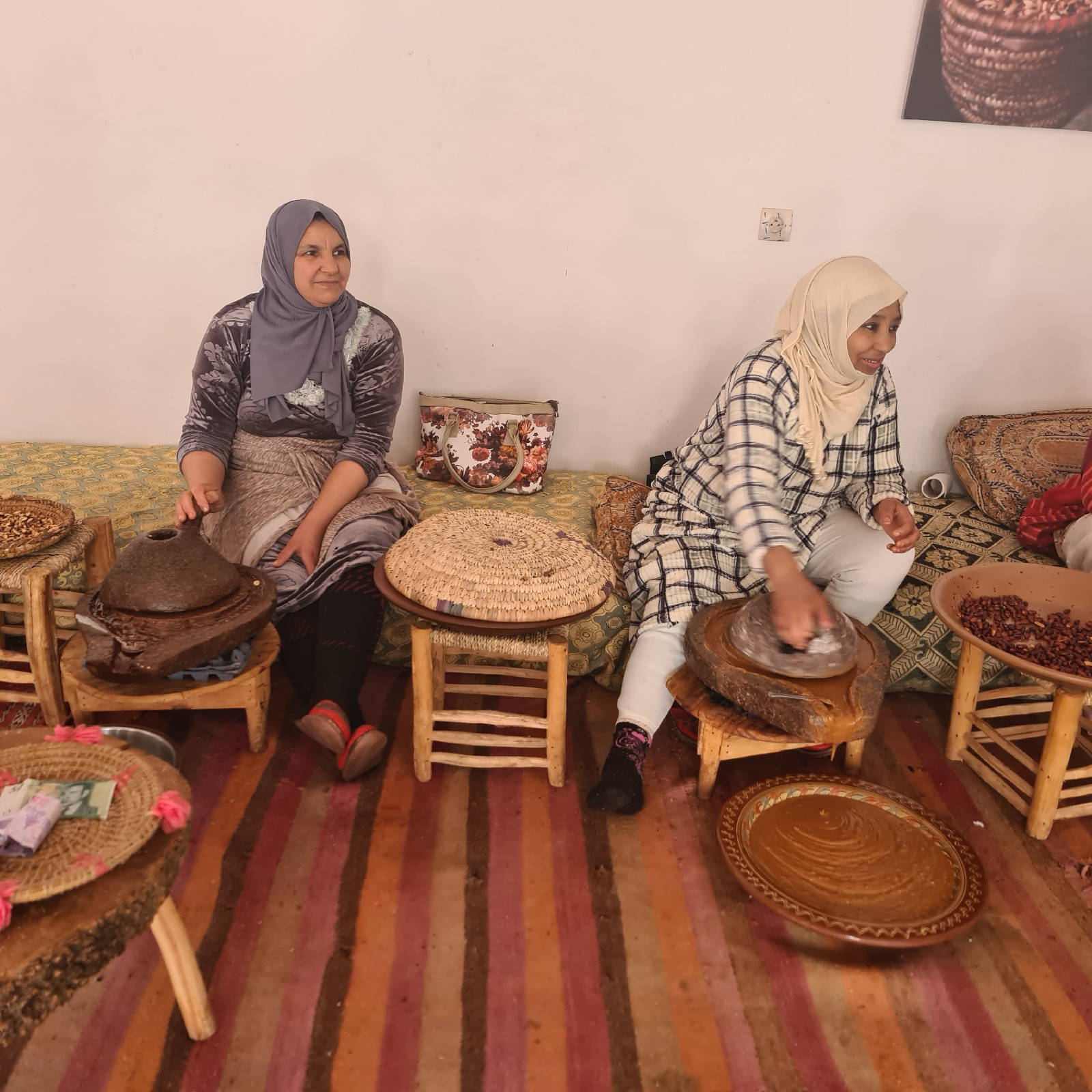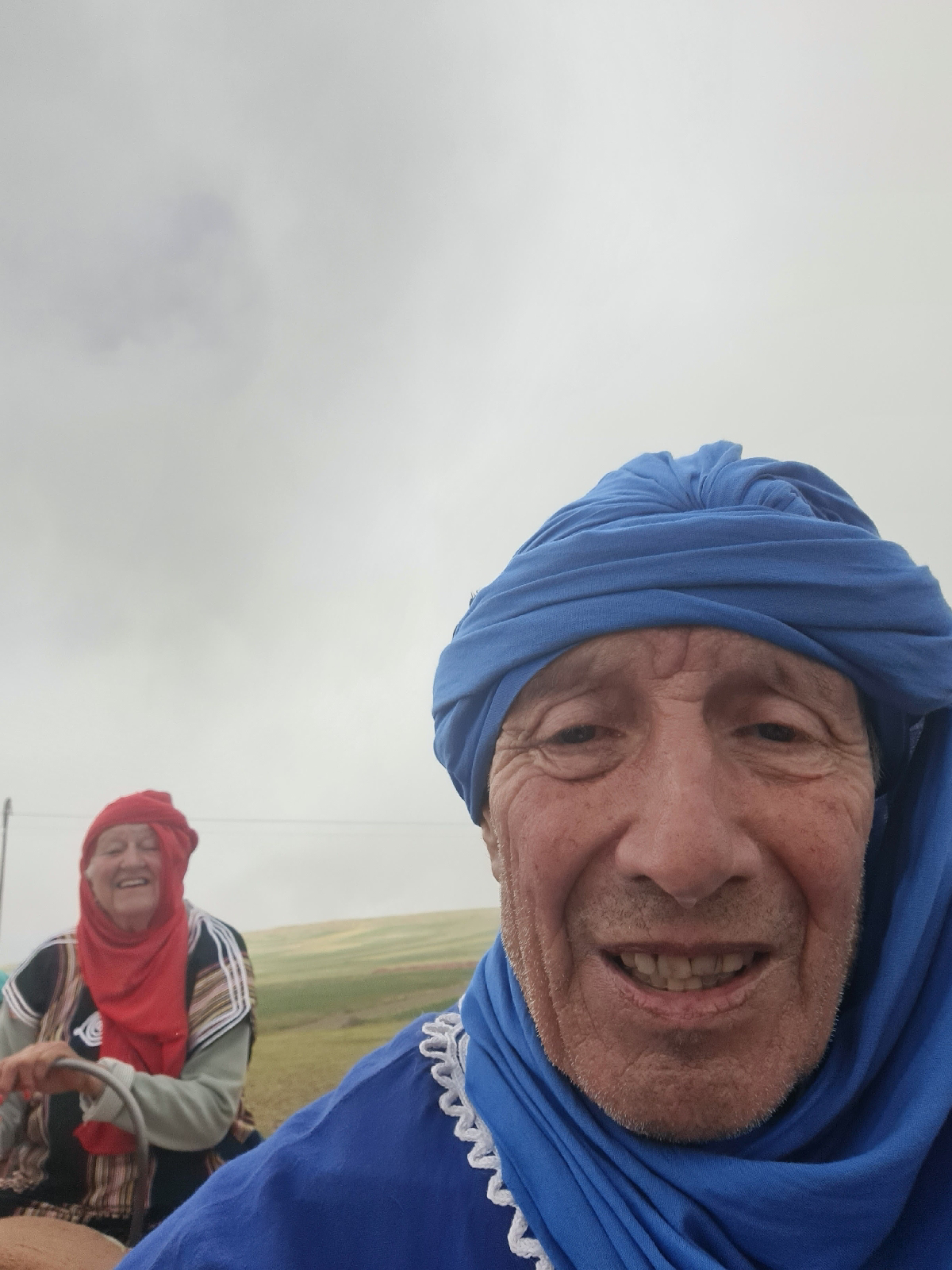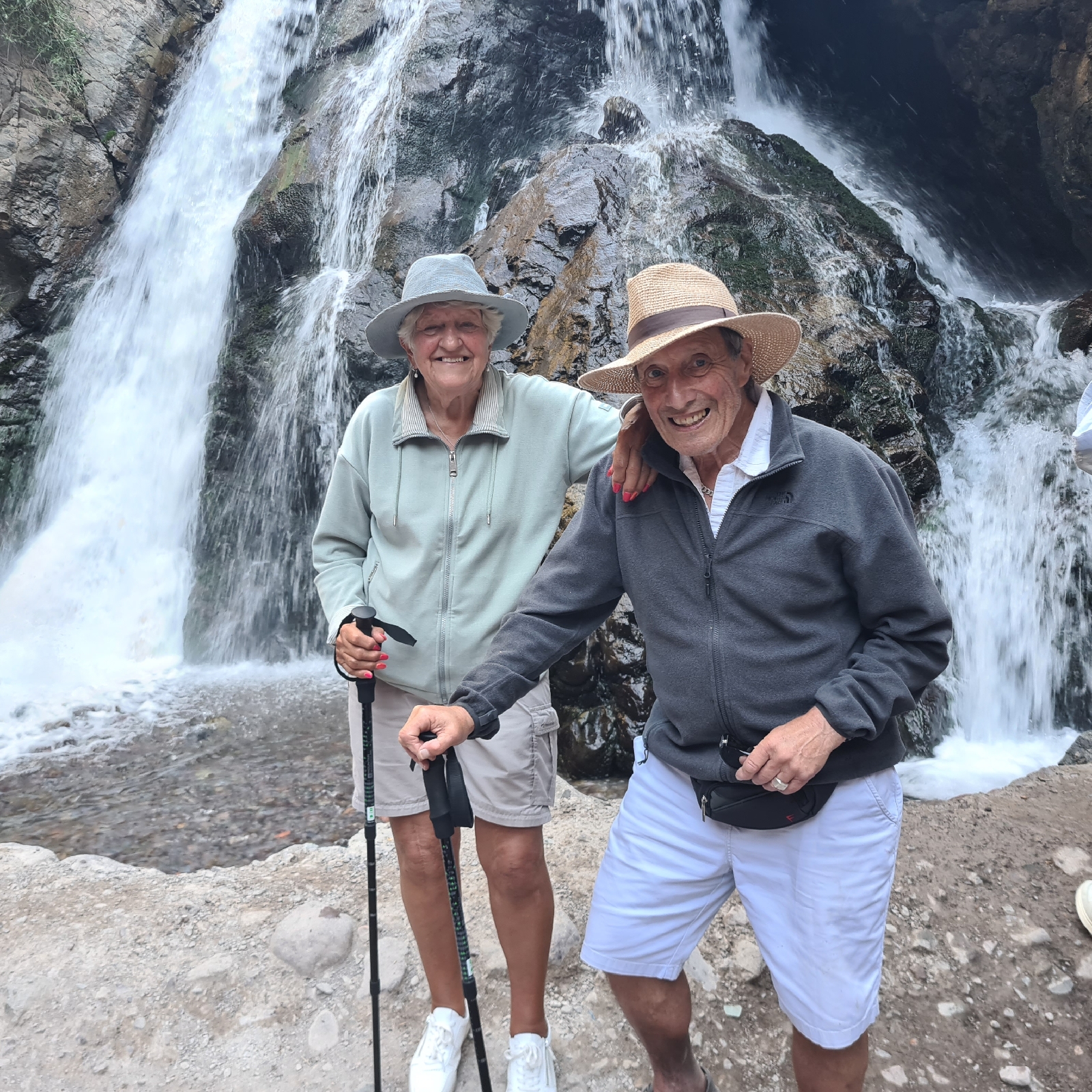This is a spot on the Ourika River where the locals like to picnic. You can hire the blankets and tables for a modest sum. Below we are heading into the High Atlas mountains and the sky looks slightly threatening.
Time to stop for our Berber breakfast. This consists of bread, olive oil for dipping, argan oil and peanut butter. All these ingredients were locally produced by hand. The picture shows two Berber ladies hand grinding the argan nuts and peanuts to make the above. I must tell you some more about argan oil. It comes from what we would recognise as the nuts from the prickly pear plant. The oil has many more uses than a cooking ingredient, primarily in the cosmetics industry. Apparently, depending on what you read, it is a wonder product. The oil is rich in amino acids, vitamins E and K, and powerful antioxidants called betalains, unique in the plant world. It is used on the skin, nails and hair. It is touted as the next big thing in the anti aging market.
The best thing about breakfast wasn't the food but the fact our group all sat down at one table and we all talked to each other. We were the only British, but sitting down with us were Dutch, Portuguese, Germans, Italians, and French. One thing we all agreed about was what a crazy and damaging decision Brexit was especially in the light of subsequent world developments.
After our second and rather late breakfast of the day we went on to experience a fully dressed up camel trek. I didn't even realise that it was on the programme!
T E Lawrence with a two day beard and one of his followers. Looks like he would benefit from some of that argan oil. Incidentally he has been warned about riding motor bikes.
Driving the train
You can see the green growth of the spring time wild plants many of which were producing colourful flowers of yellow and red. After that bumpy, tricky leg over experience, I am grateful that no-one will ever recognise me. Next we drive up the valley to the village of Setti Fatma where we will have lunch.
Our restaurant with a view. There is a ski resort up here but I don't fancy the off piste. The Berber people who live up here used to be wholly dependent on agriculture but like the upland dwellers of the Alps, tourism is now responsible for at least half the local economy.
There are a series of seven cascades up the valley. The largest and lowest is a steep thirty minutes walk with improvised bridges and large rocky scrambles. Without the assistance of our excellent guide Driss and the constant encouragement of the Portuguese girls we might not have made it! We were, of course, at least twenty years older than the next oldest on the hike.
Pretty knackered but still smiling.
A final shot of in Setti Fatma where tomorrow's lunch is sunbathing!
To close this blog I must say something about the trip. Firstly it was excellent value for money. Our thanks to the guide Driss for his caring concerns and our safety . His talks were interesting and informative and contributed to a memorable day out.

















